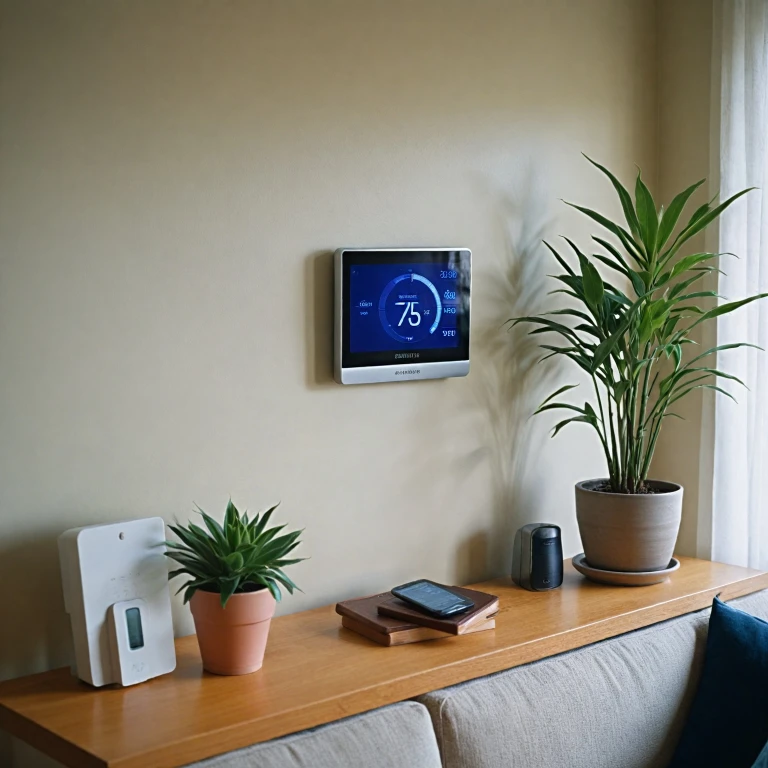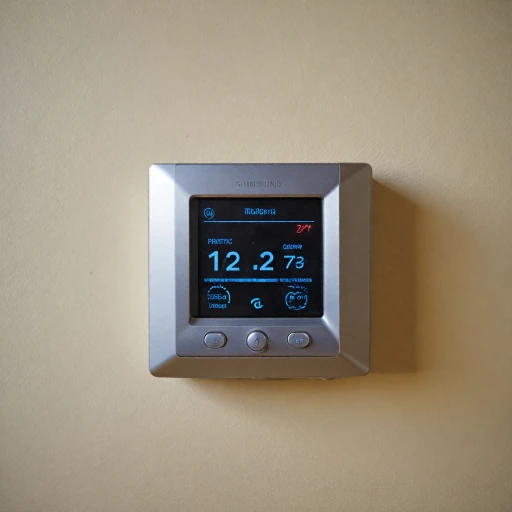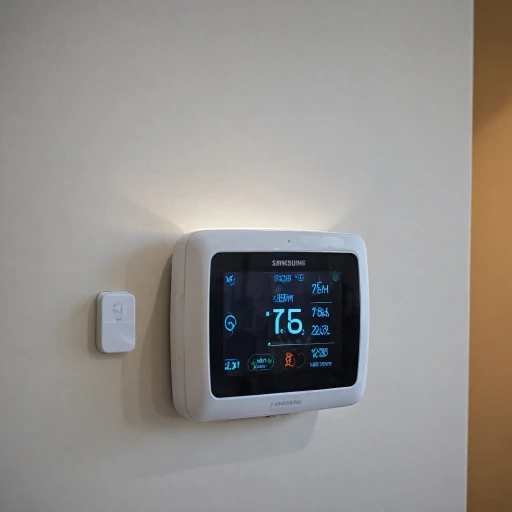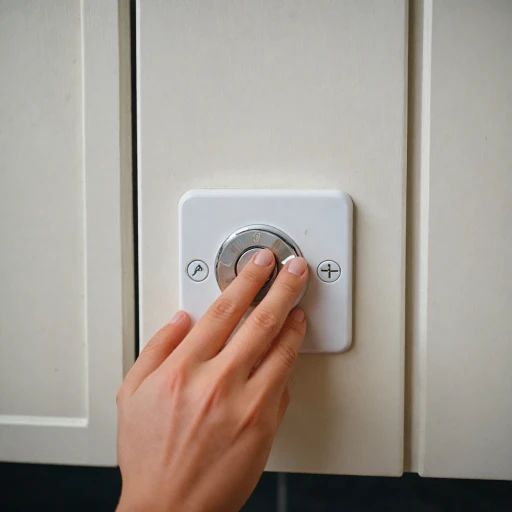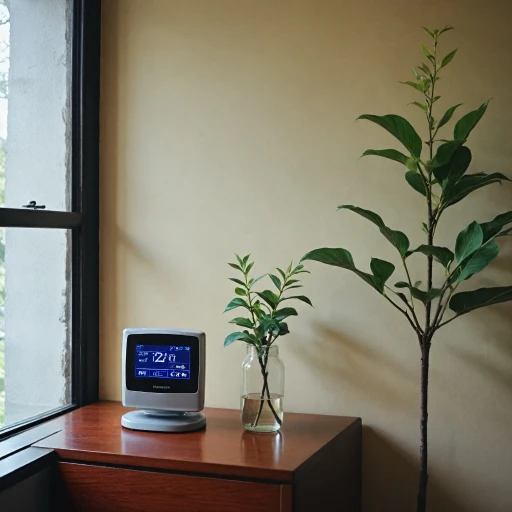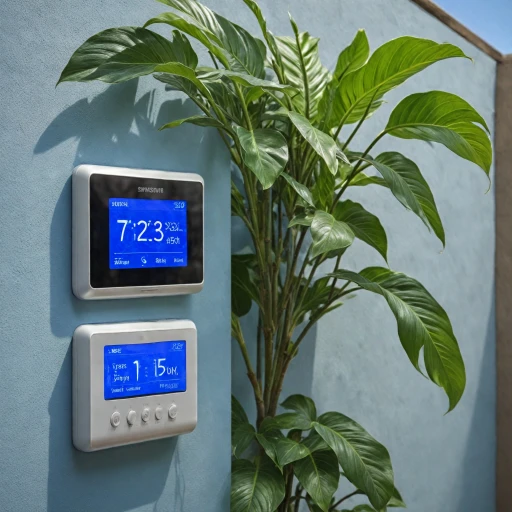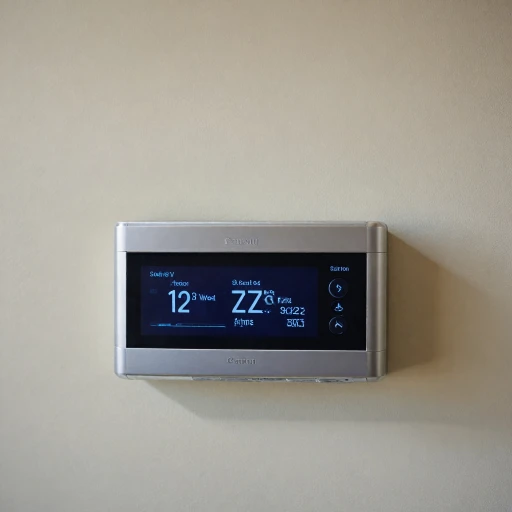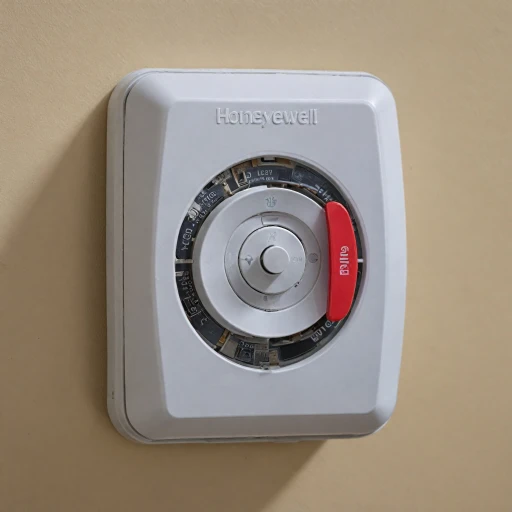
Understanding Remote Sensors in Smart Thermostats
Exploring the Role of Remote Sensors in Temperature Management
Smart thermostats have become sophisticated tools in temperature regulation, thanks to the integration of remote sensors. These small yet significant devices play a pivotal role in accurately gathering and transmitting temperature data throughout a home. Remote sensors act as "satellite" components, working with the main thermostat to provide a comprehensive "image" of your home's heating and cooling needs. To truly appreciate the benefits of remote sensors, it's essential to understand how they differ from the typical temperature sensors embedded within a smart thermostat unit. Unlike a standard temperature sensor that may only gauge conditions in a single room, remote sensors can be placed in different areas of a home. This multi-point sensing ability offers a more "spatial" view of temperature "energy" distribution across various rooms. Remote sensors collect data and relay it back to the smart thermostat, enabling it to make informed decisions. This "type" of data collection mimics techniques found in "earth observation" and "remote sensing" technologies used by "satellite remote" systems. These sensors often measure factors such as "temperature," "humidity," and even "occupancy," providing a snapshot of the home environment. The use of remote sensors enhances the "resolution" of temperature data available to the smart thermostat. Much like how "NASA Earth" observation technology assesses "land cover" and the "electromagnetic spectrum" with high "spectral resolution," a remote sensor provides specific insights allowing for better temperature management. When considering the different "sensor types" available, remote temperature sensors are particularly valuable for addressing diverse home comfort needs. They can be seen as a complement to "earth science" principles, offering a blend of "temporal resolution" and "spatial resolution." By integrating remote sensors, smart thermostats evolve into more precise climate control systems, capable of managing "level data" from various parts of a home. For more on enhancing smart thermostats, you can explore how "outdoor temperature sensors" contribute to seamless home temperature management here.How Remote Sensors Improve Home Comfort
Maximizing Climate Control in Your Home through Remote Sensing
Smart thermostats equipped with remote sensors can bring significant improvements in home comfort. By distributing temperature sensors throughout your living space, you can capture more accurate and useful temperature data from multiple points within your home. Unlike traditional thermostats that only read temperature from one location, this arrangement ensures a more holistic view of the thermal environment.
Remote sensors utilize advanced remote sensing technologies akin to those used in earth observation. These sensors monitor varying sensor types, spatial resolutions, and spectral resolutions, thus offering refined climate control by considering disparate temperature zones in the dwelling. This enables the thermostat to make precise adjustments that compensate for temperature imbalances across rooms.
Higher spatial resolution from remote sensors ensures that even subtle temperature variations are detected and addressed. As a result, living areas remain consistently comfortable, whether it involves detecting cold drafts near windows or warmer pockets near appliances. These sensors function akin to satellite remote sensing systems, capturing essential environmental data to maintain a uniform home atmosphere.
Moreover, the seamless data flow from the sensors to the smart thermostat allows for immediate adjustments and enhances the user's ability to customize settings based on specific preferences or seasonal changes. Ultimately, this advanced level of data harnessing and usage aligns with energy conservation goals by optimizing heating and cooling activities in sync with the home’s actual climate conditions.
Energy Efficiency Benefits of Remote Sensors
Boosting Energy Efficiency with Smarter Insights
When it comes to optimizing energy usage, remote sensors are a game-changer for smart thermostats. These devices harness the power of remote sensing technology, providing granular temperature data from various parts of a home. This is similar to how earth observation satellites capture spectral resolution to monitor land cover changes across the globe. With remote sensors, homeowners can achieve a balance that enhances comfort while reducing energy consumption.
Remote sensors collect level data from different rooms, acting like temperature sensors to monitor specific areas. This data feeds into the smart thermostat system, allowing it to adjust heating and cooling based on where the temperature differs. It's akin to utilizing spatial resolution in earth science, where data is not just collected from one area but from multiple points for a complete view. Integrating this real-time data enables a smart thermostat to provide just the right amount of heating or cooling, improving energy efficiency considerably.
The precise adjustments enabled by these sensors limit unnecessary overuse of heating or cooling, translating into energy savings. This mechanism mirrors the precision in adjustments needed in nasa earth imaging for monitoring earth orbit temperatures using advanced temperature sensor types. Just as nasa's earth observation satellites render accurate environmental insights, remote sensors give smart thermostats a clearer view into a household's climate needs, thereby conserving energy.
Furthermore, the integration of remote sensors reduces reliance on a central thermostat wire, leveraging satellite remote-like functionality to improve the user experience. This approach not only enhances comfort but also plays a pivotal role in energy efficiency strategies, making it essential for homes seeking sustainable solutions. Simultaneously, this technology is a testament to how enhancing home automation presents future-forward living spaces.
Installation and Setup of Remote Sensors
Getting Started with Your Remote Sensors
The installation and setup process of remote sensors for your smart thermostat may initially seem daunting, but with some guidance, it becomes straightforward. Remote sensors work by collecting data, like temperature readings, and transmitting it to your main thermostat unit. This effective system results in improved accuracy and comfort in managing indoor temperatures.
Choosing the Right Sensor Type
Before installation, it's crucial to consider the sensor type suitable for your home. Different types of sensors are available, each offering variable benefits. Some sensors enhance spatial resolution, while others focus on spectral resolution—considering the sensor's intended environment and your specific preferences can help in making an informed choice.
Placement and Connections
For the optimal performance of your remote temperature sensors, strategic placement is key. Sensors should be positioned in multiple rooms for an earth-wide view of temperature variations. This method ensures that your smart thermostat receives consistent data flow from across your living spaces for accurate comfort management.
Often, sensors either connect wirelessly or through a minimal wire system, facilitating easy integration with your existing thermostat setup. If you're opting for a wireless setup, ensure that each sensor maintains a robust connection to the thermostat.
Synchronizing with Satellite Technology
Advanced remote sensing technologies harness data from satellite remote systems. Although these are often used in earth observation or earth science—for instance, monitoring land cover or earth orbit—they inspire how we think about home systems' connectivity and efficiency. Your smart thermostat system might not require nasa-level data inputs, but the integration parallels between remote sensors and earth imaging systems ensure a smoother installation process.
Troubleshooting Tips
Sometimes, even after careful setup, issues such as faulty data transmission or inconsistent temperature readings may arise. Regular firmware updates and consulting the user manual are crucial steps in initial troubleshooting. It’s important to be familiar with common challenges to effectively address any issues, ensuring the remote sensors work in harmony for optimized energy efficiency.
Common Challenges and Troubleshooting Tips
Overcoming Installation Hurdles
Setting up remote sensors with your smart thermostat can sometimes present challenges. One common issue is the placement of the sensors. It's crucial to position them in areas that accurately reflect the temperature variations in your home. Avoid placing them near heat sources or direct sunlight, as this can skew the data collected.
Troubleshooting Connectivity Issues
Connectivity problems often arise when the sensors lose their link to the smart thermostat. This can be due to distance or interference from other wireless devices. Ensure that the sensors are within the recommended range and check for any obstacles that might block the signal. If problems persist, resetting the network settings can sometimes resolve the issue.
Dealing with Inconsistent Data
Inconsistent temperature readings can be frustrating. This might be due to sensor type or placement errors. To improve accuracy, consider the spatial resolution of the sensors and adjust their locations as needed. Regularly updating the firmware can also enhance the sensor's performance, ensuring it captures data accurately.
Understanding Sensor Types
Different sensor types offer varying levels of accuracy and functionality. For example, some sensors might excel in capturing temperature variations, while others might provide more detailed spatial resolution. Understanding the capabilities of your specific sensor type can help you optimize its use and troubleshoot any issues effectively.
Exploring Advanced Troubleshooting Techniques
For more complex issues, consulting the manufacturer's support resources can be beneficial. They often provide detailed guides on resolving specific problems, from connectivity to sensor calibration. Additionally, online forums and communities can be valuable resources for user-generated solutions and tips.
Future Trends in Smart Thermostats with Remote Sensors
Emerging Trends in Smart Thermostats
The smart thermostat industry is evolving rapidly, with remote sensors leading the charge in innovation. Recent technological advancements are paving the way for exciting developments in this field.- Enhanced Remote Sensing Capabilities: The integration of high-resolution remote sensors allows for more accurate room temperature readings, providing significant improvements in home comfort and energy efficiency.
- Integration with Earth Observation Data: Leveraging data from satellite remote sensing and earth science technologies, smart thermostats can optimize temperature control by analyzing environmental conditions, such as weather patterns and land cover changes. This advancement could fine-tune thermostat settings for increased energy savings.
- Advanced Sensor Types: The latest temperature sensors are now incorporating spectral resolution and spatial resolution technologies, capable of detecting minute temperature differences across various room zones. This increased sensor precision enhances the ability to maintain consistent thermal comfort throughout a home.
- AI and Machine Learning Insights: As AI systems become more sophisticated, they are better at interpreting data collected by remote temperature sensors. This enhancement leads to smarter, more adaptive thermostat algorithms that anticipate the needs of home environments, reducing energy consumption without compromising comfort.
- Wireless Connectivity Advances: Enhanced connectivity options mean that temperature sensors can communicate more effectively without needing wires, utilizing the latest in low-energy wireless protocols. This advancement simplifies installation and potentially reduces costs.
- Sustainability Focus: Environmental considerations are influencing thermostat designs. By processing data more efficiently, these devices could lower the energy footprint associated with home heating and cooling, contributing to more sustainable living practices.
